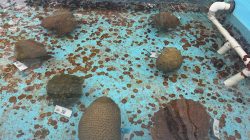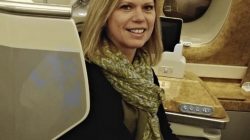“What I liked about Cunard is when I stepped on the ship, it felt like a ship. Some of the other cruise ships feel like floating resorts. This feels like a real ship.”
“I never thought a cruise would appeal to me, but the photos you’ve been posting are making me change my mind. Please keep sharing!”
“A cruise? That’s literally my worst nightmare.”
Really? A nightmare that includes fine dining, world class lecturers, foil fencing lessons, professional land excursions in countries all over the world, a fitness centre, spa and afternoon tea? Sounds more like a dream.
These are just a few of the comments I received as I took my first cruise since Covid. I knew what I was getting into when I agreed to join Cunard’s cruise to the Norwegian Fjords, as I had one Cunard experience under my belt. I had done their signature transatlantic ocean crossing from Southampton, England, to New York City some six years prior, on the Queen Mary 2. This time I would be sailing on their smaller, newer ship, the Queen Victoria. (Approximately 2,000 passengers and 900 crew members.)
There are cruise ships. And then there are ocean liners. I prefer the latter.
Put aside what you think you know about cruises as I take you through the recent voyage I did as we sailed from Southampton, England, to the Norwegian Fjords.
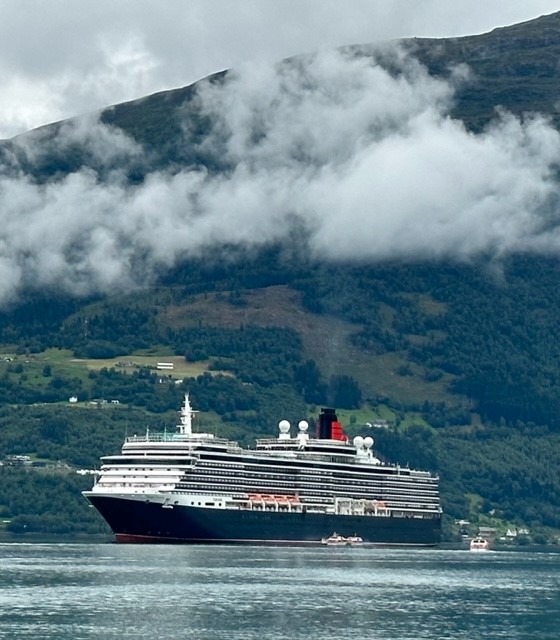
Starting from the check in process, Cunard is extremely organized and from the moment I dropped my luggage to their porter, to passport check in, being photographed and going through the security line, to the gangplank which would take me on board, took about 45 minutes.
When you enter the ship into the main lobby, at once you are invoked with visuals of the ocean liners off the past. The broad sweeping two storey staircase is the centrepiece.
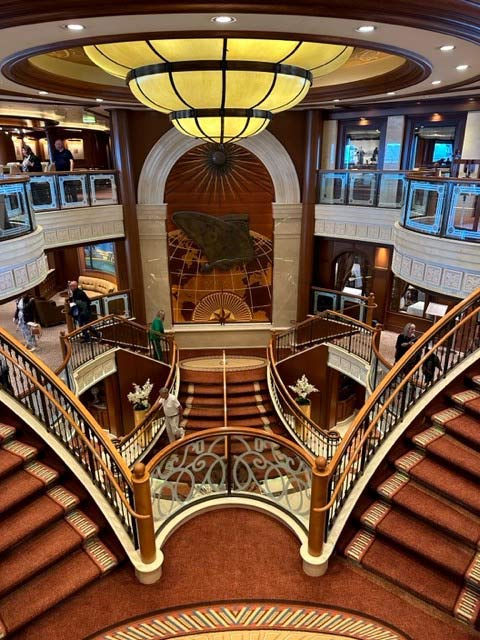

I was on the 4th floor (floors four through eight were passenger rooms), in the middle of the ship, which is pretty much the most stable room you can have. Did I feel the waves on occasion? I did, which is to be expected on any cruise, but as I used sea Bands and Gravol, I didn’t suffer from sea sickness.
We had anticipated two full days at sea, but ended up having three due to a storm which kept us from docking at our first port. The Captain explained that he had slowed the ship so that the waves would be kept at a minimum, something we all appreciated. It is important to remember when going on a cruise that the weather conditions can change, facilitating an itinerary change.
What to do on a day at sea? On Cunard, the choices were almost endless. Every day there is a full slate of activities planned. Each morning, the Entertainment Director hosts a “morning show” on the ship’s television which gives you an overview of the schedule, plus interviews with some of the performers and artists.
During the day you can choose from lectures, bingo, musical performances, fitness classes, team trivia, table games, movies, art classes, the legendary afternoon tea, plus many more organized activities, or take a book out the library, put together a jigsaw puzzle or just snooze on a deck chair. I used the gym every day, as did many other passengers. Stage of the art equipment space for all who wanted to run, ride, or lift weights.
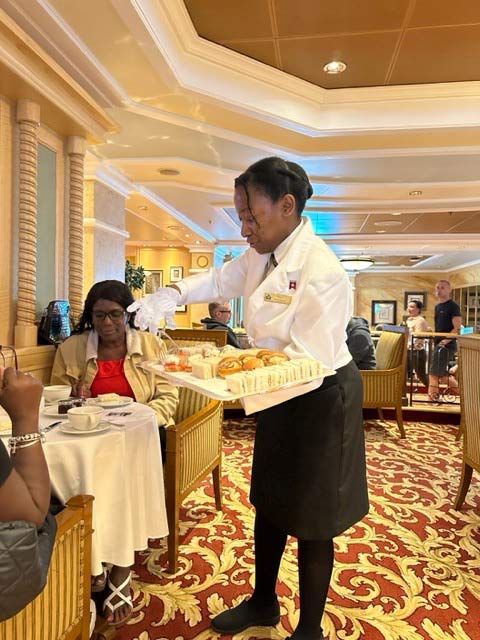

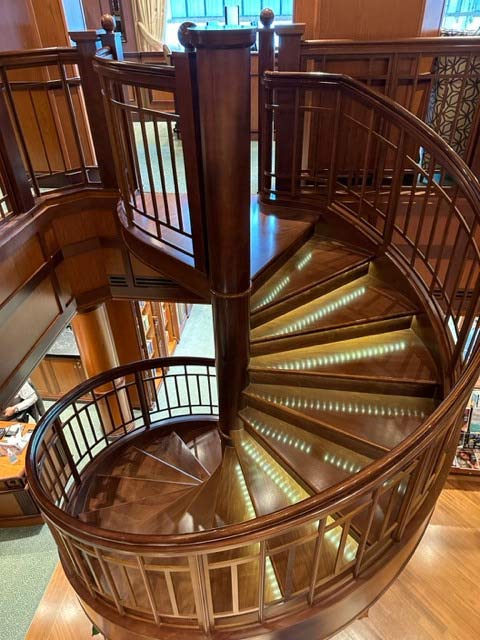

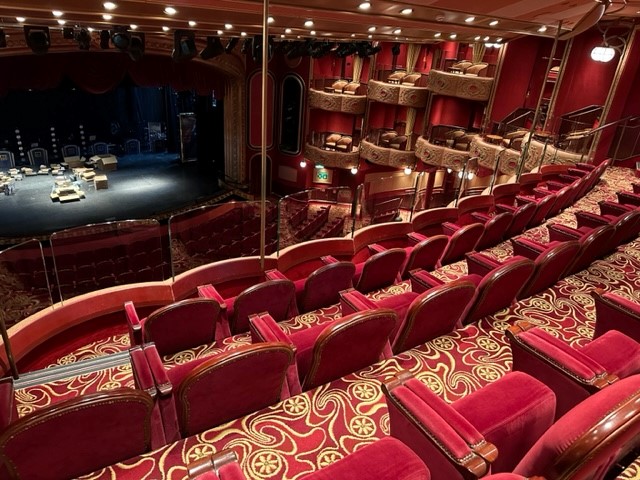

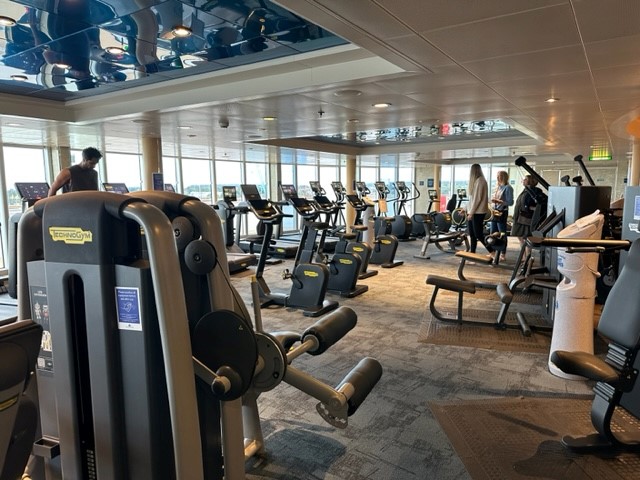

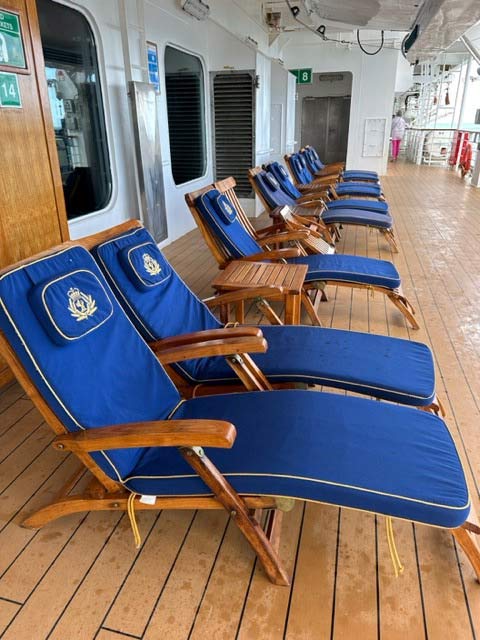

While there is a traditional buffet onboard the Queen Victoria, available for all meals, there are also assigned dining rooms, depending on your class of ticket. The Brittania Room, The Princess Grille and the Queen’s Grille all served up gourmet fare. As well, there was a pop-up Norwegian restaurant in the evenings, and a specialized steak house, which could be accessed at a nominal extra fee. I opted for lunch at the onboard English style pub one day, an option always open if you didn’t want to “dress smart” after 6:00pm, which was the dress code every night.


Evening activities were varied and substantive as well. There were Gala Nights, including a Black and White Ball, and a Roaring 20’s party. Silent discos, ballroom dancing, show performances, comedians, or one could just sit at one of the lounges or the pub and just enjoy a few drinks with friends.
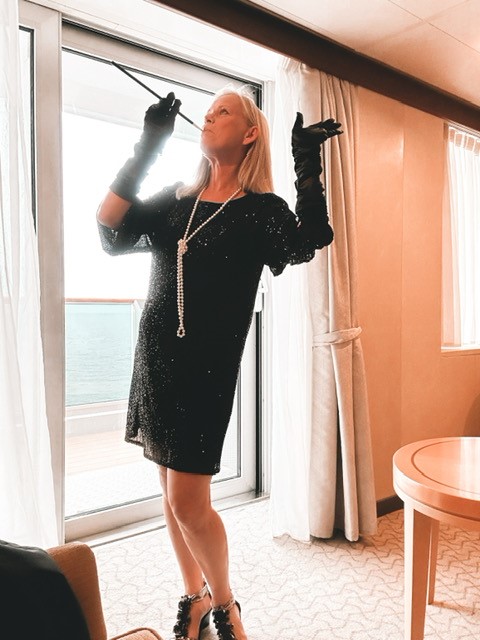

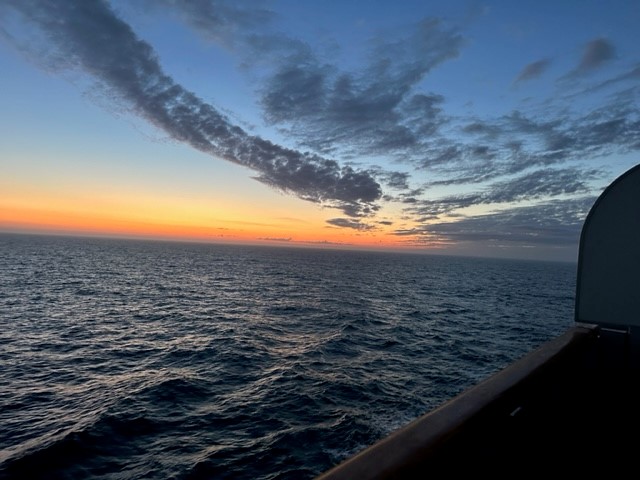

Our first stop in the fjords was the port of Skjolden, Norway. Skjolden is a serene village nestled among mountains, in the world’s longest navigable fjord. Skjolden is home to the Jostedal Glacier, which is the largest glacier on the European Mainland. Shore experiences there included glacier visits, walking with llamas, mountain scenery tours, and village tours.
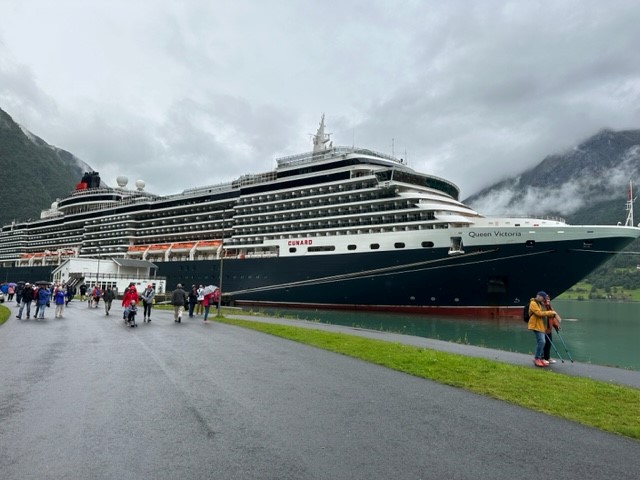

For the port of Olden, the next day, we were anchored, and rode tenders in to this small village. Olden is located at the mouth of the Oldeelva river at the north end of the Oldedalen Valley. A major tourist destination, there are opportunities for helicopter sightseeing, a ride up the Leon Skylift, a visit to Stryn or hiking on the Briksdal Glacier (also reachable by trolley car).
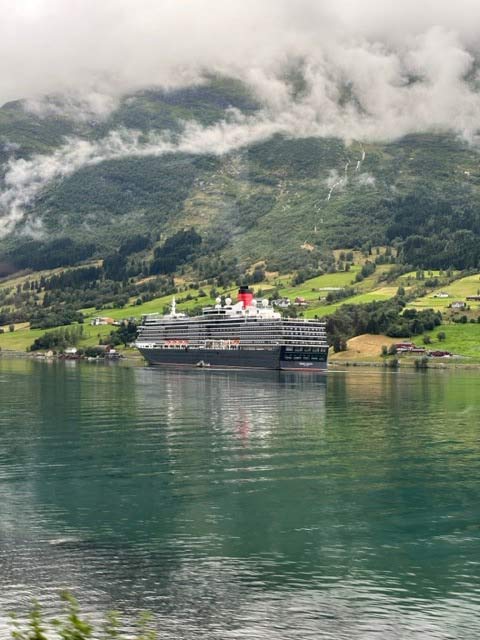

Our third port visit was Haugesund, the largest of the three ports, with a population of about 38,000. A walking tour through the city revealed Norway’s longest pedestrian shopping street (2kms), many shops, restaurants, statues and unique styles of architecture. The Sildajazz music festival was going on while we visited there, with jazz bands playing and strolling through the streets.
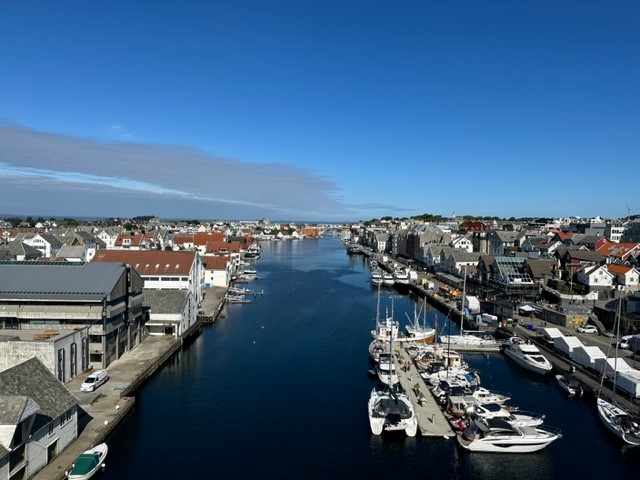

We experienced another day at sea during the return voyage to Southampton. Many passengers I spoke with said that the days at sea were, to them, just as enjoyable as the land excursions. We docked at Southampton at about 7:00 in the morning, and by 7:15, passengers were already disembarking, which is done on a schedule, or if you take your own luggage off the ship, via a flexible time. I wasn’t the only one who looked back at the ship and thought about planning my next voyage with Cunard.
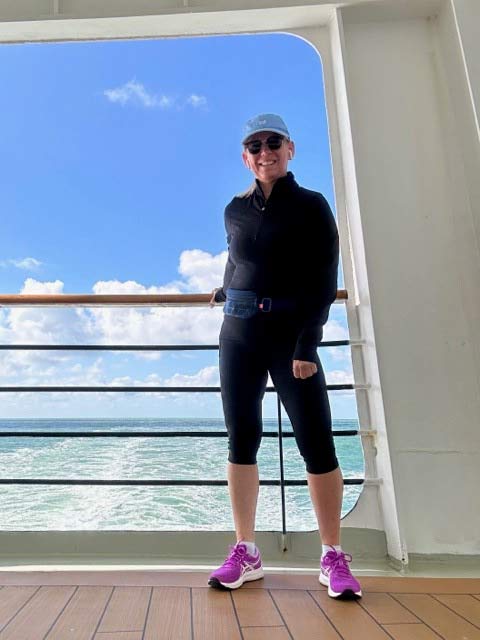

For more information on Cunard voyages, including the upcoming launch of their newest ship, The Queen Anne, in May of 2024, visit www.cunard.com
You can hear my interview with key personnel on board on the Go-To Grandma podcast, episode 107.
This press trip was provided by Cunard. Opinions are my own.





